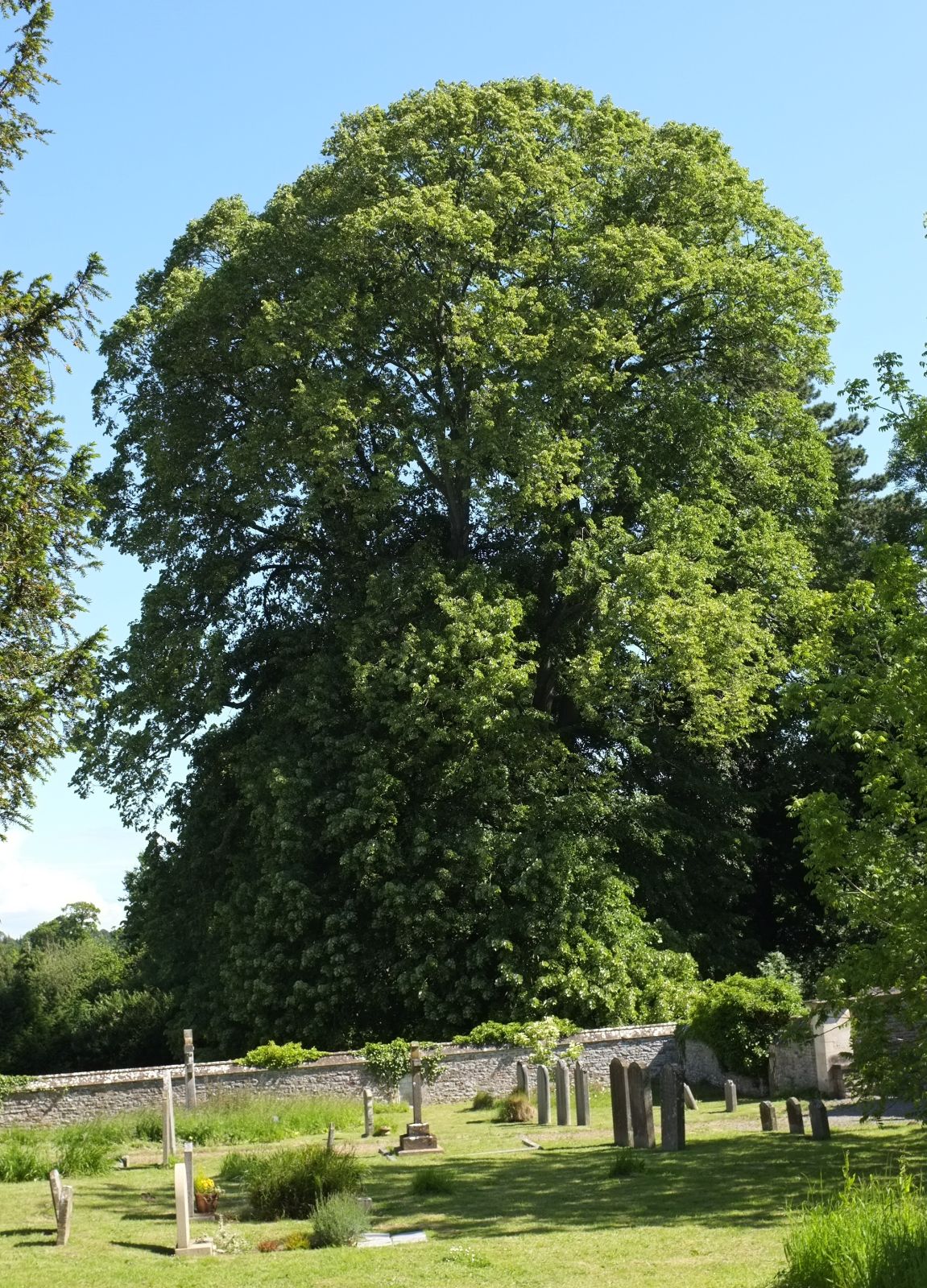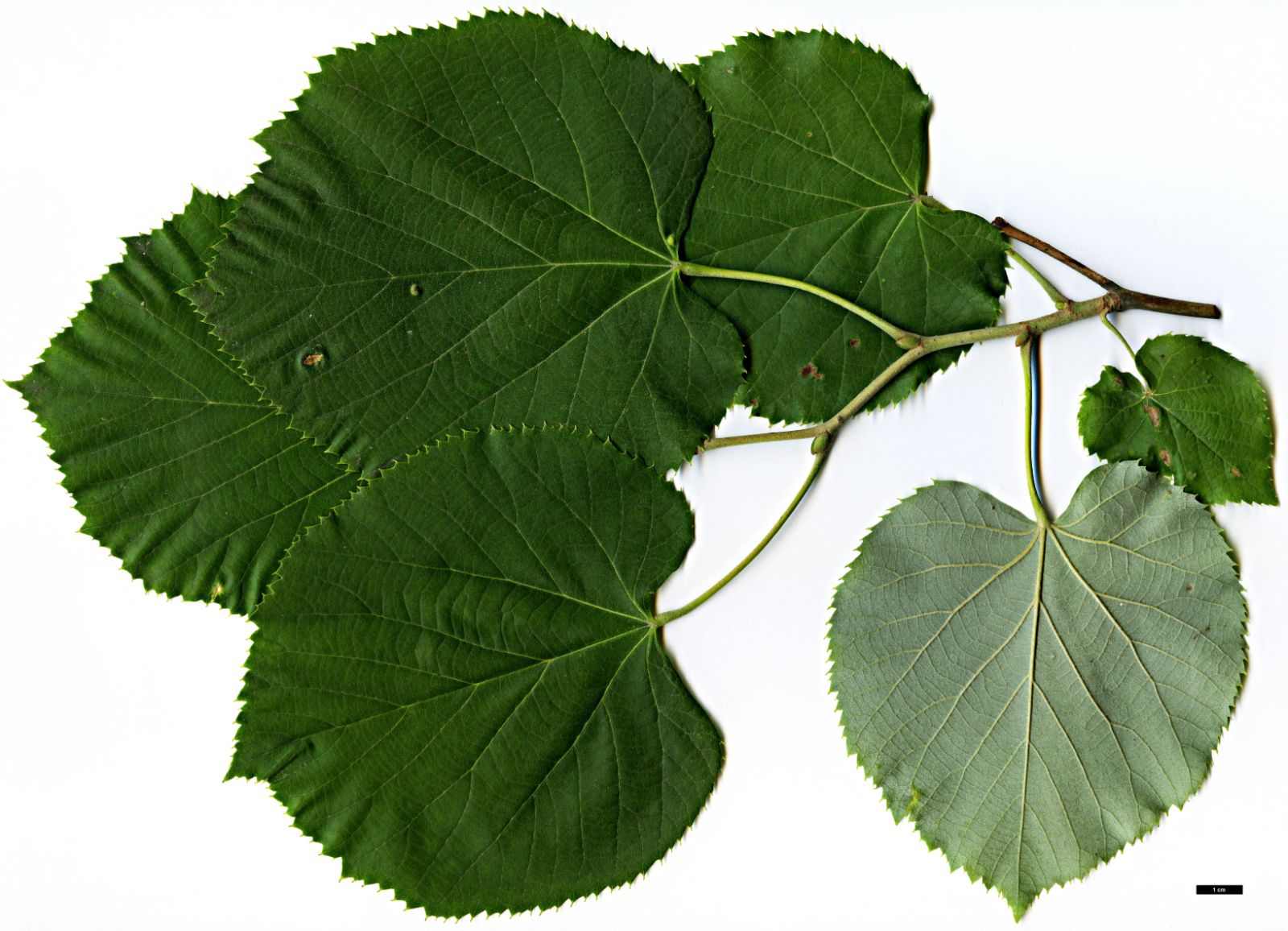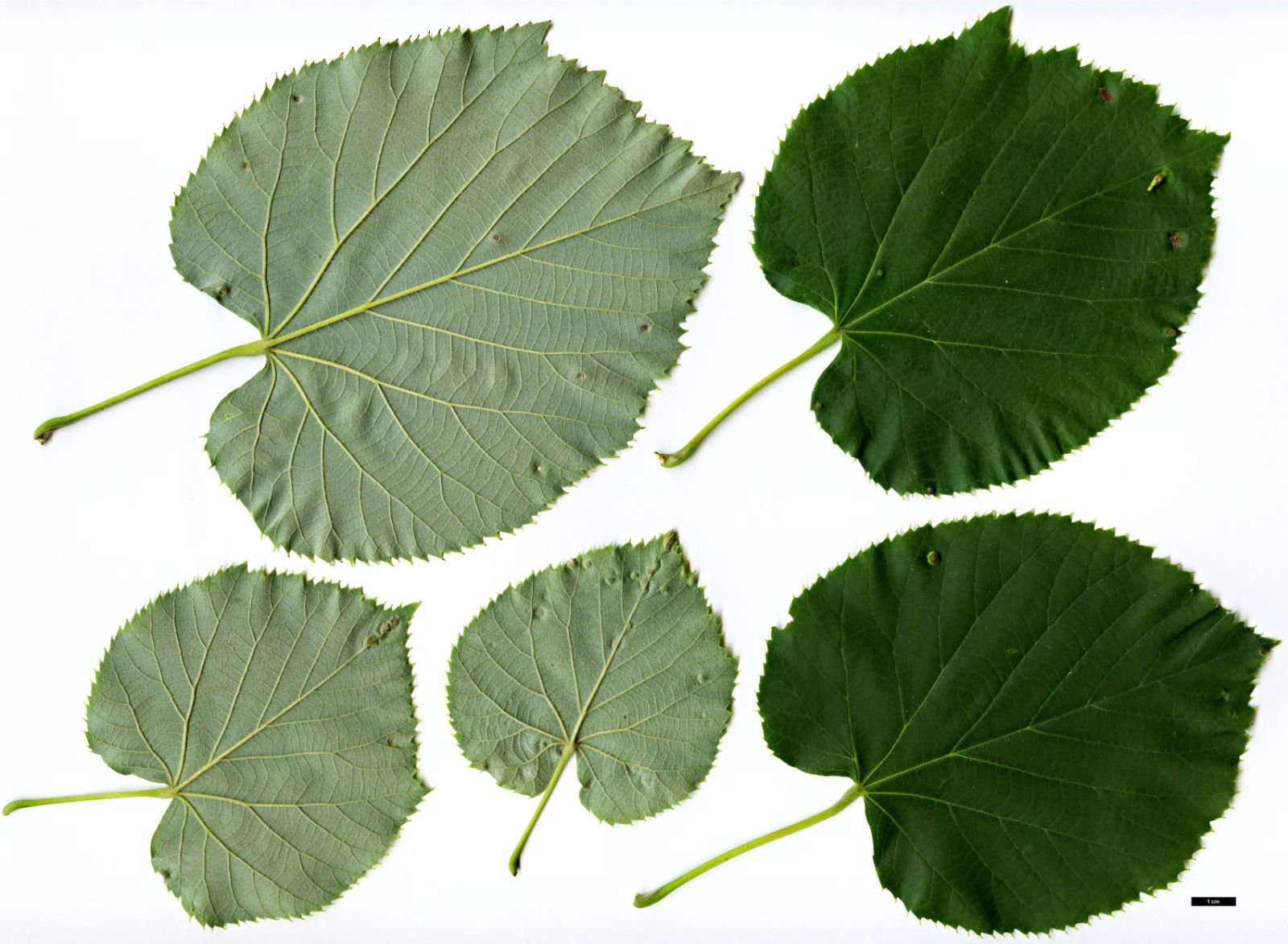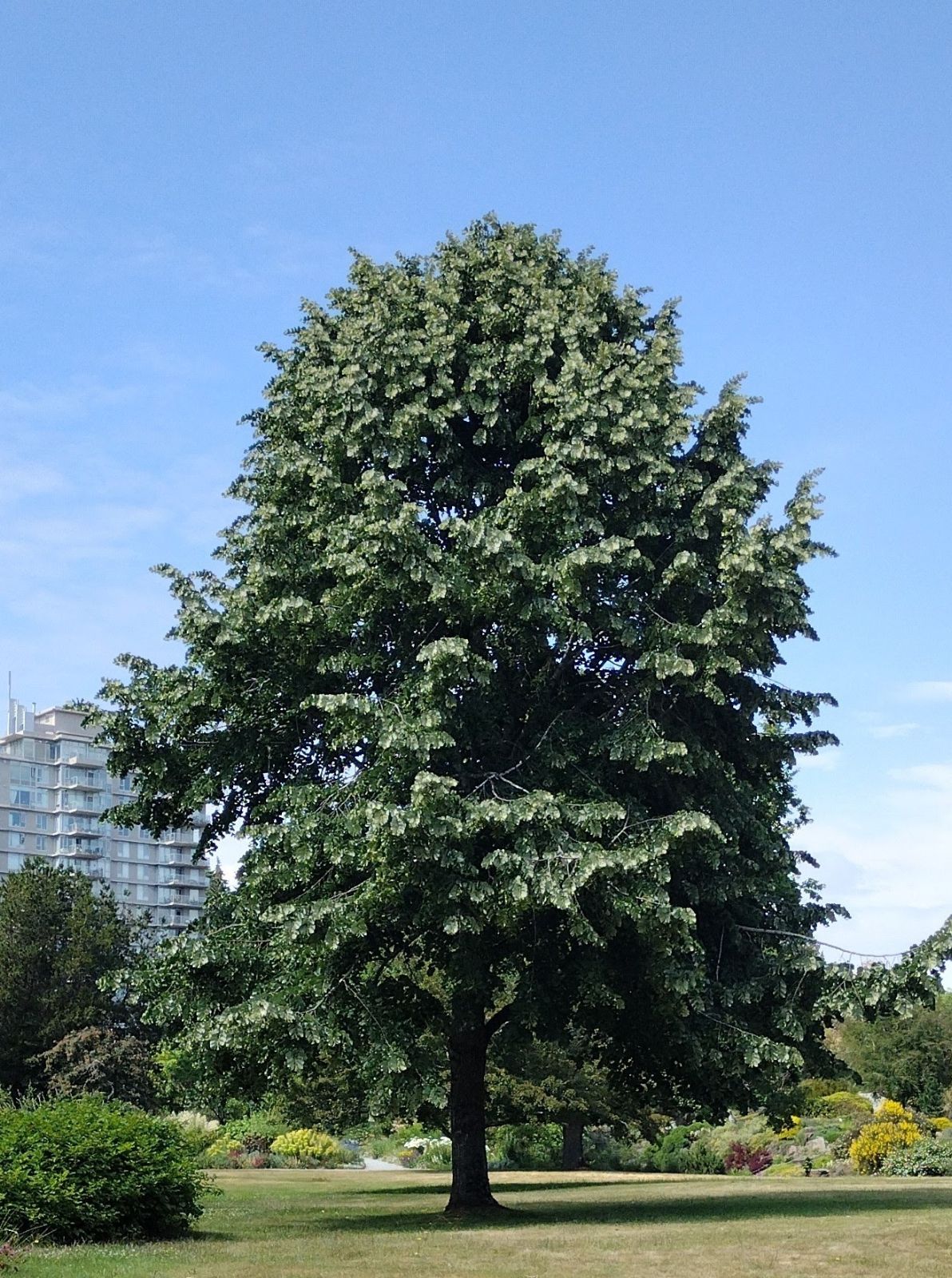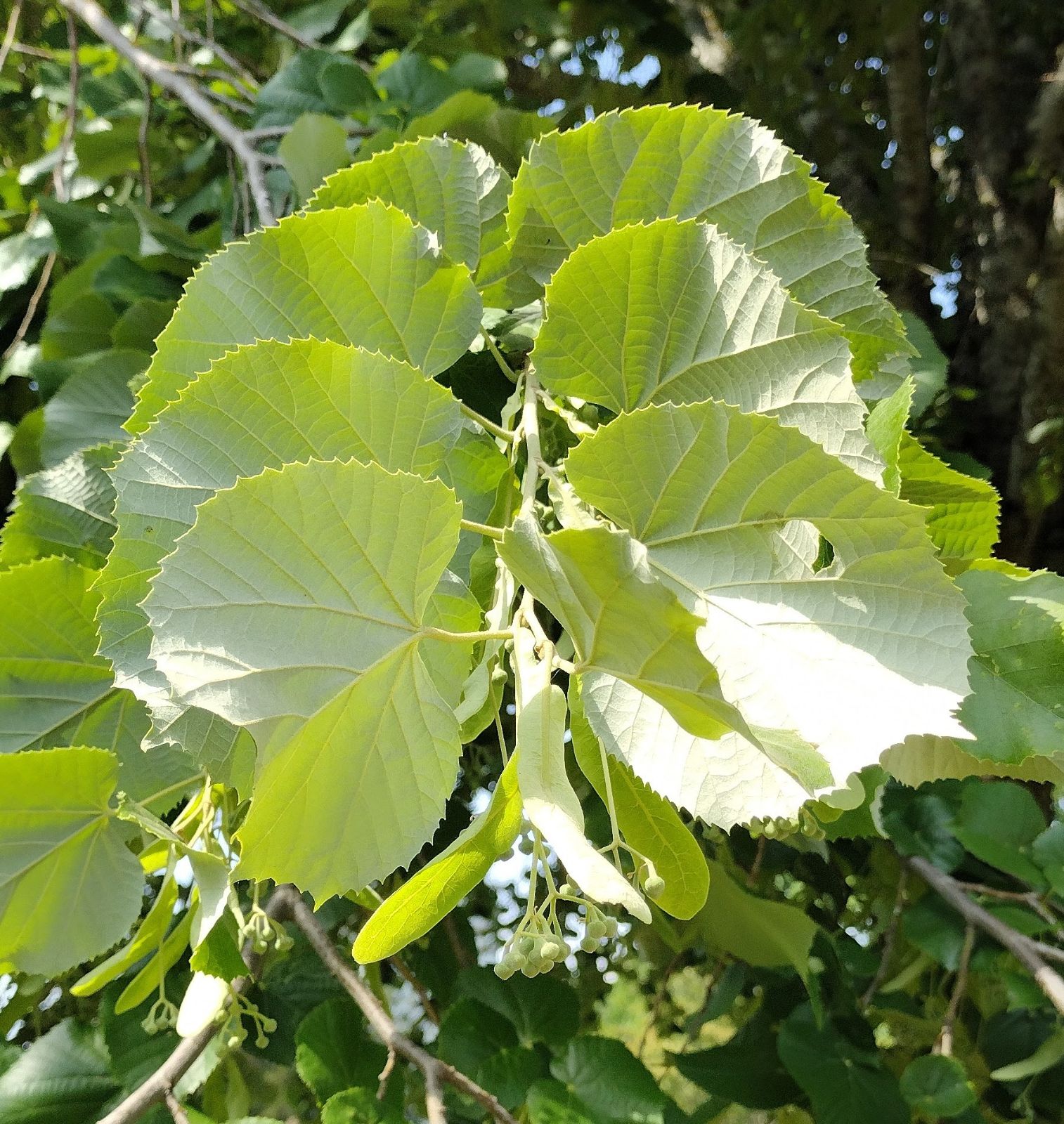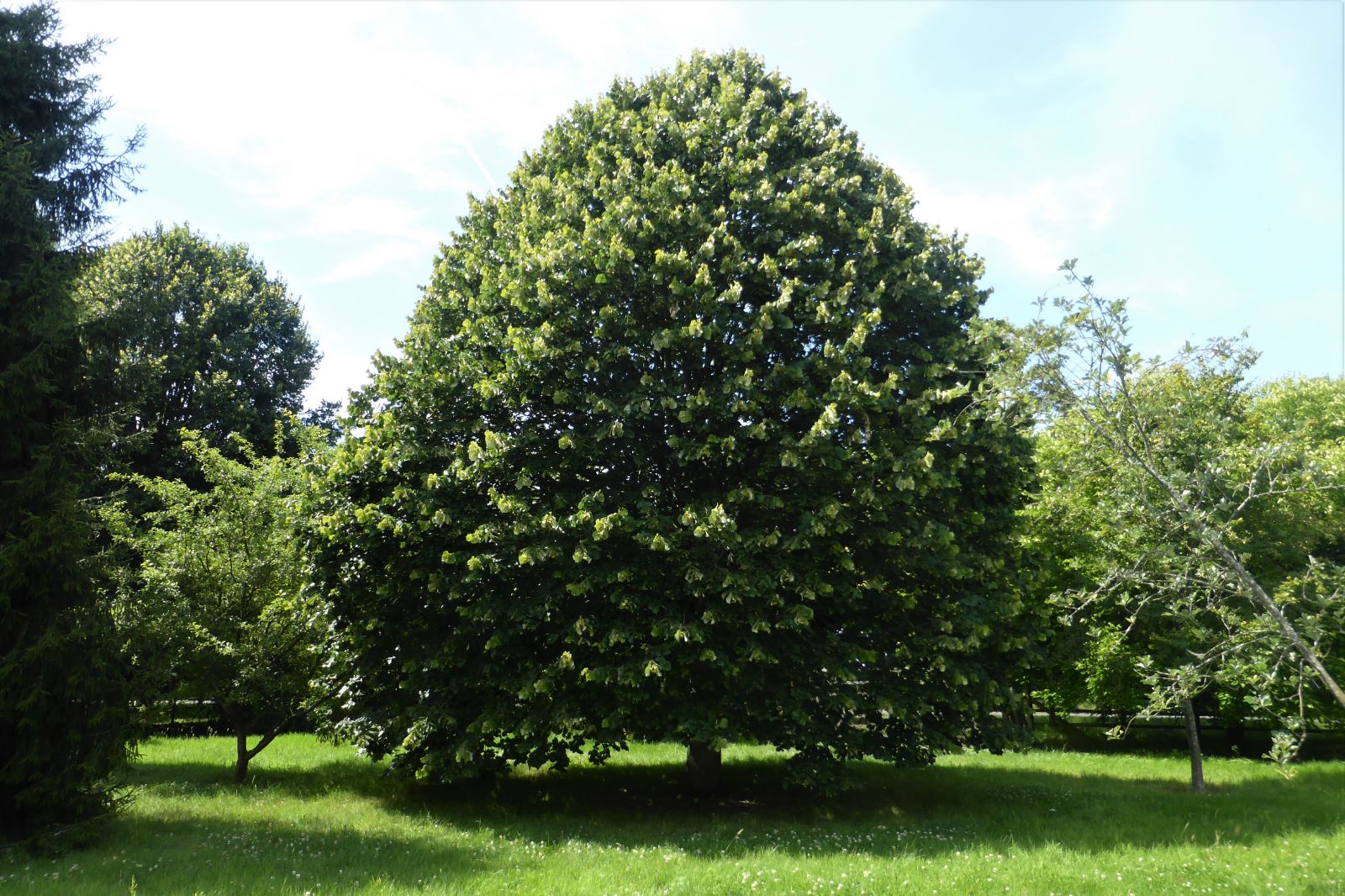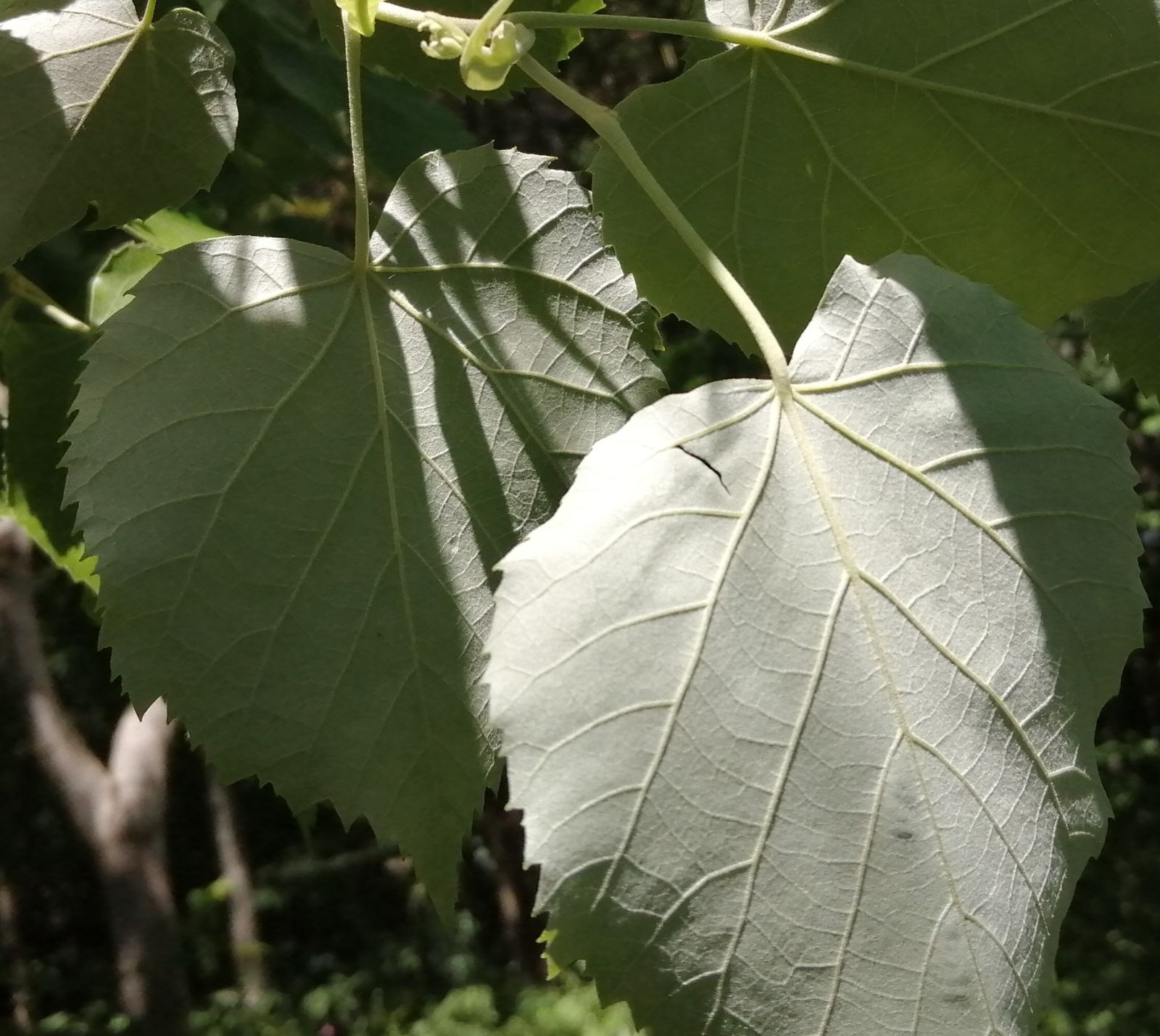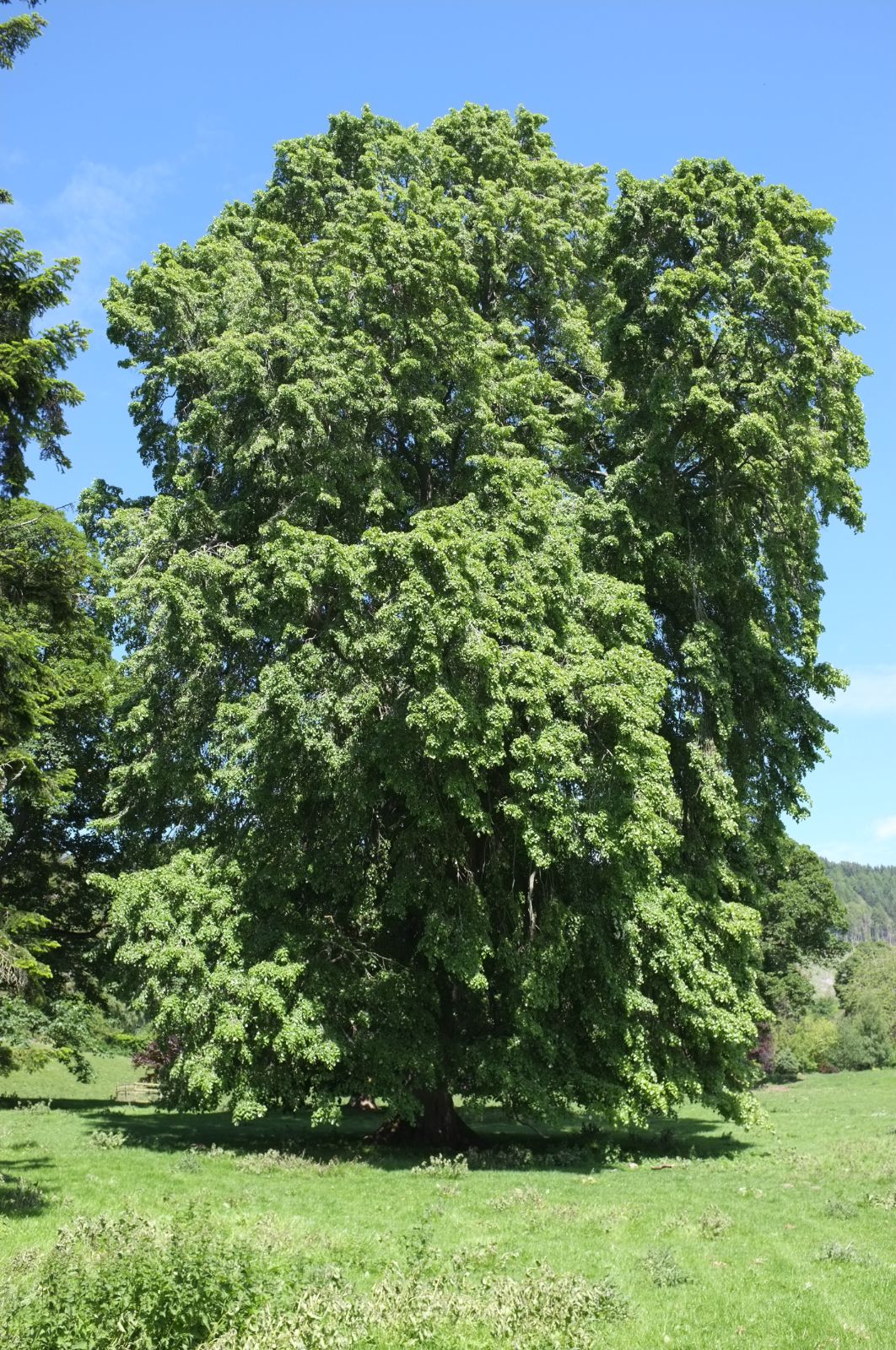Tilia tomentosa
Sponsor
Kindly sponsored by
a member of the International Dendrology Society
Credits
Owen Johnson & Julian Sutton (2020)
Recommended citation
Johnson, O. & Sutton, J. (2020), 'Tilia tomentosa' from the website Trees and Shrubs Online (treesandshrubsonline.
Genus
Common Names
- Silver Lime
- European White Lime
- Silver Linden
Synonyms
- Tilia alba Ait., in part
- Tilia argentea DC.
- Tilia europaea var. alba (Ait.) Loud.
Infraspecifics
Other taxa in genus
- Tilia americana
- Tilia amurensis
- Tilia callidonta
- Tilia chinensis
- Tilia chingiana
- Tilia concinna
- Tilia cordata
- Tilia dasystyla
- Tilia endochrysea
- Tilia × euchlora
- Tilia × europaea
- Tilia × flaccida
- Tilia × flavescens
- Tilia Hanwell Hybrids
- Tilia 'Harold Hillier'
- Tilia 'Harvest Gold'
- Tilia × haynaldiana
- Tilia henryana
- Tilia japonica
- Tilia × juranyana
- Tilia kiusiana
- Tilia mandshurica
- Tilia maximowicziana
- Tilia miqueliana
- Tilia mongolica
- Tilia nobilis
- Tilia × noziricola
- Tilia oliveri
- Tilia paucicostata
- Tilia platyphyllos
- Tilia tuan
- Tilia 'Westonbirt Dainty'
Tree to 40 m, dbh 2 m, with a neatly domed habit. Bark pale grey, developing flat-topped criss-cross ridges from about 30 years of age. Twigs with a dense felt of grey hairs which persist for a year. Buds with 2 or 3 visible scales, densely brown-felted. Leaves 6–11 × 6–11 cm, orbicular, rarely 3– or 5-lobed, dark green above with stellate hairs mostly shed by maturity, usually white underneath with a dense tomentum of predominantly 8-armed stellate hairs. Stalk with a variably dense felt of white hairs. Marginal teeth with an apiculate tip 0.1–0.8 mm long. Floral bract 5–11.5 × 1.1–2.2 cm, white-felted on one side. Inflorescence drooping, with 4–10 flowers, strongly honey-scented. Staminodes present. Fruit 9–10 × 7–8 mm, ellipsoidal, smooth or mamillate, densely grey-brown-felted; wall thick and woody (Pigott 2012).
Distribution Albania Bulgaria Croatia Greece Hungary south North Macedonia Montenegro Romania Serbia Slovenia Turkey Ukraine west
Habitat Woodlands, mostly on light calcareous soils.
USDA Hardiness Zone 4-7
RHS Hardiness Rating H6
Conservation status Least concern (LC)
A European native, Tilia tomentosa is among the most familar limes grown in Western Europe. Long cultivated in its natural range and grown commercially for its timber in Bulgaria and Romania (Pigott 2012), an early date for its introduction further west seems very likely. In Britain, the species was in James Gordon’s Mile End Nursery in 1767 (Aiton 1811); Moench’s name of 1785 was published in a catalogue of trees in a German park (Pigott 2012).
Tilia tomentosa is the only member of Section Astrophilyra (characterised by stellate hairs beneath the leaves) native to western Asia or Europe; the majority, including some which quite closely resemble Silver Lime, are found several thousand miles away in East Asia (Pigott 2012). It is tempting to speculate that this is a relict distibution, limes of this group having had a wide Eurasian distribution before the climate upheaval of the Pleistocene (Milne & Abbot 2002). Certainly T. tomentosa occurs in the same region as Syringa vulgaris and Forsythia europaea, the sole European representatives of essentially East Asian genera (Pigott 2012).
This is a variable species in southeastern Europe, in leaf shape, hairiness and crown form. Cultivated material further north and west apparently has a much narrower genetic base: trees here usually have erect branches forming a broadly conical crown, orbicular leaves with a cordate base, and such a dense tomentum beneath the leaves that they appear white (Pigott 2012). The tree responds to periods of heat and drought by angling its leaves so that the underleaf faces outwards or even upwards; the crown appears to turn white, reverting to dark green under cooler, moister conditions. The effect is to reflect more solar radiation, reducing leaf temperature and perhaps rate of water loss through transpiration (Hirons & Thomas 2018). The white-backed leaves make it easy to pick out in the landscape and viewing a Balkan hillside with all the Tilia tomentosa leaves ashimmer is a wonderful experience.
In Britain, this is the most vigorous and largest-growing of the ‘white-leaved’ limes. Many were planted in or around 1800 (Loudon 1838). Two of these, grafted on Common Lime, survive at Highclere Castle, Hampshire, the larger 19 m, dbh 2.05 m in 2012; a famous tree in the paddock next to Tortworth church, Gloucestershire was 34 m, dbh 1.73 m in 2015 (Tree Register 2018). Silver Limes grow well at least as far north as Central Scotland. Examples include an avenue lining the southern drive at Castle Milk, Dumfriesshire (Tree Register 2018), and there are fine specimens at Doune Park near Stirling (T. Christian, pers. comm. 2020). Probably the tallest measured trees, in warmer, more continental climates are 37 m specimens at the Royal Museum for Central Africa, Tervuren, Belgium, (measured 2011) and at Sarrot near Pau, France (measured 2018). A tree of probable wild origin at Bogat, Hungary was 2.04 m dbh in 2001 (monumentaltrees.com 2018). It is hardy as far north as the very south of Finland, where trees planted in the 1920s grow at the Arboretum Mustila (Arboretum Mustila 2020). Aphid resistance and a degree of drought tolerance make Tilia tomentosa a popular choice as a lime for street planting.
Long cultivated and common in North America (Jacobson 1996), Tilia tomentosa is widely growable in our area, and represented in many collections. Coupled with cold tolerance, its drought tolerance (perhaps the most of any linden – Missouri Botanical Garden 2020) makes it viable even in parts of the central United States.
Many cultivars have been selected in Europe and North America, Hungary being particularly important. Most are clones chosen for their good crown form, at least in youth. Where uniformity is desired, for example in avenues, even those cultivars whose distinctive features cannot easily be described have value. Jablonski & Plietzsch (2014) provide a thorough checklist.
Two old variegated cultivars were recorded in 1903, ‘Aureo-Variegata’ and ‘Pendula Variegata’ (Beissner et al. 1903 fide; Jablonski & Plietzsch 2014) but are assumed to be lost to cultivation, as is the way with variegated limes.
'Bori'
A form with a compact, rounded-crown selected in Hungary before 1985 in a programme to identify heat tolerant woody plants for urban sites (Jablonski & Plietzsch 2014). It is offered by nurseries in Hungary, sometimes as low grafts: this last observation seems to argue against the suggestion (Jablonski & Plietzsch 2014) that the Dutch ‘Hungary Globe’, which seems to require top grafting to produce a standard, represents the same clone.
'Brabant'
Awards
AGM
A Dutch clone with a broad, conical crown with a well-developed central stem, which makes it relatively wind resistant. It originated in the village of Hoeven, North Brabant province, before 1930 (Bean 1981; Jablonski & Plietzsch 2014). This is a large variety, much marketed in Europe as a shade tree for streets and avenues. In Britain, specimens had reached 17 m at Pine Lodge, Cornwall by 2014 and at the Sir Harold Hillier Gardens, Hampshire by 2017 (Tree Register 2018).
The following are similar but much less widely distributed (Jablonski & Plietzsch 2014): ‘Doornik’ (syn. Kortrijk’: Belgium, pre-1930); ‘Nijmegen’ (Netherlands, pre-1980); ‘Petrov’ (Czech Republic, pre-1994). Better known is the Hungarian ‘Szeleste’ (q.v.).
'Erecta'
A narrow-crowned, upright selection first listed by the Hesse nursery, Germany in 1958 (Jablonski & Plietzsch 2014). It seems to have fallen out of commerce, but the name is often mentioned in books, and trees so labelled are in collections on both sides of the Atlantic, some looking ‘not too different from the species especially with age’ (Dirr 2009).
f. rhodopetala Borbás
Synonyms
See ‘Wagner János’.
'Grey Pillar'
A relatively narrow-crowned form, selected in Hungary before 1992 (Jablonski & Plietzsch 2014), and offered by several large European nurseries as a street tree.
'Hergest Silver'
A linden with exceptionally white-backed leaves growing in the old nursery at Hergest Croft, Herefordshire, of unknown origin but seemingly T. tomentosa, has been named ‘Hergest Silver’ by Lawrence and Elizabeth Banks. It has been propagated and distributed from Hergest Croft (WL Banks, pers. comm. to John Grimshaw 2019).
'Orbicularis'
Synonyms / alternative names
Tilia × orbicularis (Carr.) Jouin
A member of Petiolaris Group (Jablonski & Plietzsch 2014), this is a large tree to 30 m with the general habit of ‘Petiolaris’. It is rather more pendulous, with a more conical crown; the leaves have shorter petioles, are very glossy above, and are grey- rather than silvery-tomentose beneath, remaining on the tree until late October (Bean 1981). It was raised at the Simon-Louis Freres nursery near Metz, France, in 1868 as a seedling from ‘Petiolaris’; their nursery manager, E. Jouin supposed that the pollen parent was T. × euchlora, which grew nearby (Bean 1981). While T. × euchlora produces no seed, it is not inconceivable that it produces a little fertile pollen, but this hybrid origin has never been confirmed, and the careful Jablonski & Plietzsch (2014) are content to list it under T. tomentosa.
Large specimens labelled ‘Orbicularis’ include a tree on the Mariemont estate, Hainaut, Belgium (29.4 m, dbh 460 cm, 2015 – monumentaltrees.com 2020) and one at Glasnevin National Botanic Gardens, Dublin (22 m, dbh 203 cm, 2012 – Tree Register 2020). It is rare but not extinct in the nursery trade (Pan-Global Plants 2020).
Petiolaris Group
Common Names
Silver Pendent Lime
Synonyms
Tilia petiolaris DC sensu Kirchn. and sensu Hook. f.
Forms with unusually long petioles and graceful, drooping branches belong here, and appear to be sterile. There is more than one clone in circulation, but it is unclear exactly how many. We follow Jablonski & Plietzsch (2014) in treating this as a cultivar group, which both allows for uncertainty over the identity of some clones, and sidesteps the dilemma of whether to conserve a famliar but more recent name.
The very familiar name ‘Petiolaris’ and the less familiar and probably more recent ‘Pendula’ belong here. Most specimens are named as one or the other. They probably represent a single clone (Bean 1981; Pigott 2012) but nobody can be certain: it seems best to maintain the existing labelling of stocks, ‘Petiolaris’ being the familiar and commercially available one. The slight twisting of the long petioles means that in addition to the graceful shape, the white undersides of many leaves are visible. Grimshaw (2013) rates it as ‘one of the noblest of big trees…rivalling anything’. A clone fitting this description was certainly in British cultivation by 1842 (Elwes & Henry 1906). The 19th-century French ‘Orbicularis’ (q.v.) belongs here, as does the 20th-century Dutch ‘Mat’.
‘Chelsea Sentinel’ resembles ‘Petiolaris’ but has a broadly columnar habit; it was propagated from a tree at the Royal Hospital, Chelsea, London and introduced by Hillier Nurseries in 1987, the same year the original tree blew down.
As a tree of great beauty and vigour (and ultimate stature), ‘Petiolaris’ / ‘Pendula’ remains a popular ornamental. It is possibly the most fragrant of all lindens, scenting the landscape for hundreds of metres around a tree. The nectar-rich flowers attract immense numbers of all sorts of insects, somewhat countering the view that the nectar is poisonous to bees; dried they make a delicious tisane. Early trees were grafted at heights of up to 3 m – for example a large one in the City of Bath Botanical Gardens, Somerset – presumably in the expectation that they would weep straight back to the ground; the scion generally outgrows the stock of Tilia × europaea or T. platyphyllos in an alarming but not intrinsically unstable fashion (O. Johnson, pers. obs.). An old example at the Curraghchase Forest Park in Co. Limerick, Ireland, was apparently grafted on typical T. tomentosa, branches from which have invaded the crown (Tree Register 2018). The largest in Britain include one of 1.76 m dbh (in 2008) at Wigginton Old Rectory in Oxfordshire, a tree 31 m, dbh 173 cm (in 2016) near the Compton Chamberlayne cricket field in Wiltshire, one of 1.64 m dbh (in 2017) at Hatherop School in Gloucestershire, and an especially shapely one of 31 m, dbh 151 cm (in 2014) at Stonepitts Manor in Kent (Tree Register 2018). A very old-looking tree in the deer-park at Melbury in Dorset has a hollow bole which has separated into two parts.
Similarly impressive specimens are found across western and central Europe (monumentaltrees.com 2020). Trees labelled ‘Pendula’ have long been in North American cultivation, but it remains rare; Jacobson (1996) mentions a specimen in Villanova, PA being 40 m tall in 1980.
‘Orbicularis’ is now rare. There is a tree in Glasnevin National Botanic Garden in Dublin (22 m, dbh 65 cm – Tree Register 2018); grafted specimens taken from it are grown at the Sir Harold Hillier Gardens, Hampshire and at Peasmarsh Place, East Sussex. There is another old specimen on the Mariemont Estate, Belgium (29 m in 2015 – monumentaltrees.com 2020). A specimen of ‘Chelsea Sentinel’ at Bute Park, Cardiff, planted in 1988, was 17 m tall by 2013 (Tree Register 2018).
'PNI 6051'
Synonyms / alternative names
Green Mountain®
A particularly vigorous and heat-tolerant clone, making a dense, broadly pyramidal to oval crown. Selected by Princeton Nurseries, New Jersey by 1990 (Jacobson 1996; Dirr 2009; Jablonski & Plietzsch 2014).
'Sashazam'
Synonyms / alternative names
Satin Shadow®
Broadly pyramidal-crown, at least in youth. An important clone in the North American nursery trade, selected by Lake County Nursery, Ohio before 1990 (Jablonski & Plietzsch 2014; Lake County Nursery 2020).
'Silver Globe'
A rounded, shrubby variety normally top grafted in the European trade to give a standard with a small, round crown. Brought from Hungary to the Netherlands in 1985, named 1988. It is slightly larger than ‘Hungary Globe’ (see comments under ‘Bori’). ‘Teri’ is probably a synonym. (Jablonski & Plietzsch 2014; van den Berk Nurseries 2020)
'Sisi'
Symmetrical, neat, ovoid crown with very regular, sharply ascending branches, at least in youth. In Hungary, the foliage emerges 8–10 days later than other varieties, autumn colour starts 4–5 days earlier, and flowering is late. Selected by Elemér Barabits at the Alsótekeresi nursery, Hungary and released in 2019, it is a protected variety in Europe, in production on a large scale at the Alsótekeresi nursery, and set to become a widely-planted selection in central Europe (Alsótekeresi Faiskola 2019; T. Christian, pers. comm. 2020).
'Sterling'
Synonyms / alternative names
'Wandell'
Sterling Silver Linden®
Selected for its ‘impressive’ (Dirr 2009) symmetrical crown with ascending branches, from seedlings acquired by Illinois nurseryman Willet Wandell in 1957. Granted US Plant Patent 6511 in 1989 (Justia 2020), it has become one of the most important trade clones in North America, and is also available in Europe.
'Szeleste'
Compact, pyramidal-crown becoming more broadly conical, rather resembling ‘Brabant’; petals small and deformed (this probably of little horticultural significance). The original tree (25 m tall in 2009) grew at the Arboretum Szeleste, Hungary; it was in Dutch cultivation by 1982 and is marketed in Europe as a street tree (Jablonski & Plietzsch 2014; van den Berk Nurseries 2020).
'Varsaviensis'
Synonyms / alternative names
'Mrs. Stensson'
Relatively narrow, conical crown form, perhaps pure T. tomentosa, perhaps a hybrid. Originated around 1900 at Warsaw Botanical Gardens, named in 1951 but registered in 1965. It is in the European nursery trade, and was introduced to Canada in 1965, but is probably not in North American commerce (Jacobson 1996; Jablonski & Plietzsch 2014, van den Berk Nurseries 2020).
'Wagner János'
Synonyms / alternative names
Tilia tomentosa f. rhodopetala Borbás
An extraordinary selection whose petals have long pink tips, made from a wild tree by the Hungarian dendrologist János Wagner before 1950. This tree was originally described as T. tomentosa var. inaequalis f. rhodopetala Borbás (Jablonski & Plietzsch 2014), though var. inaequalis is no longer recognised. There is a specimen in the Budai Arboretum, Hungary (Szent István Egyetem 2020) and it is said to have been grown in Germany (Jablonski & Plietzsch 2014), but this cultivar surely deserves a wider distribution.


